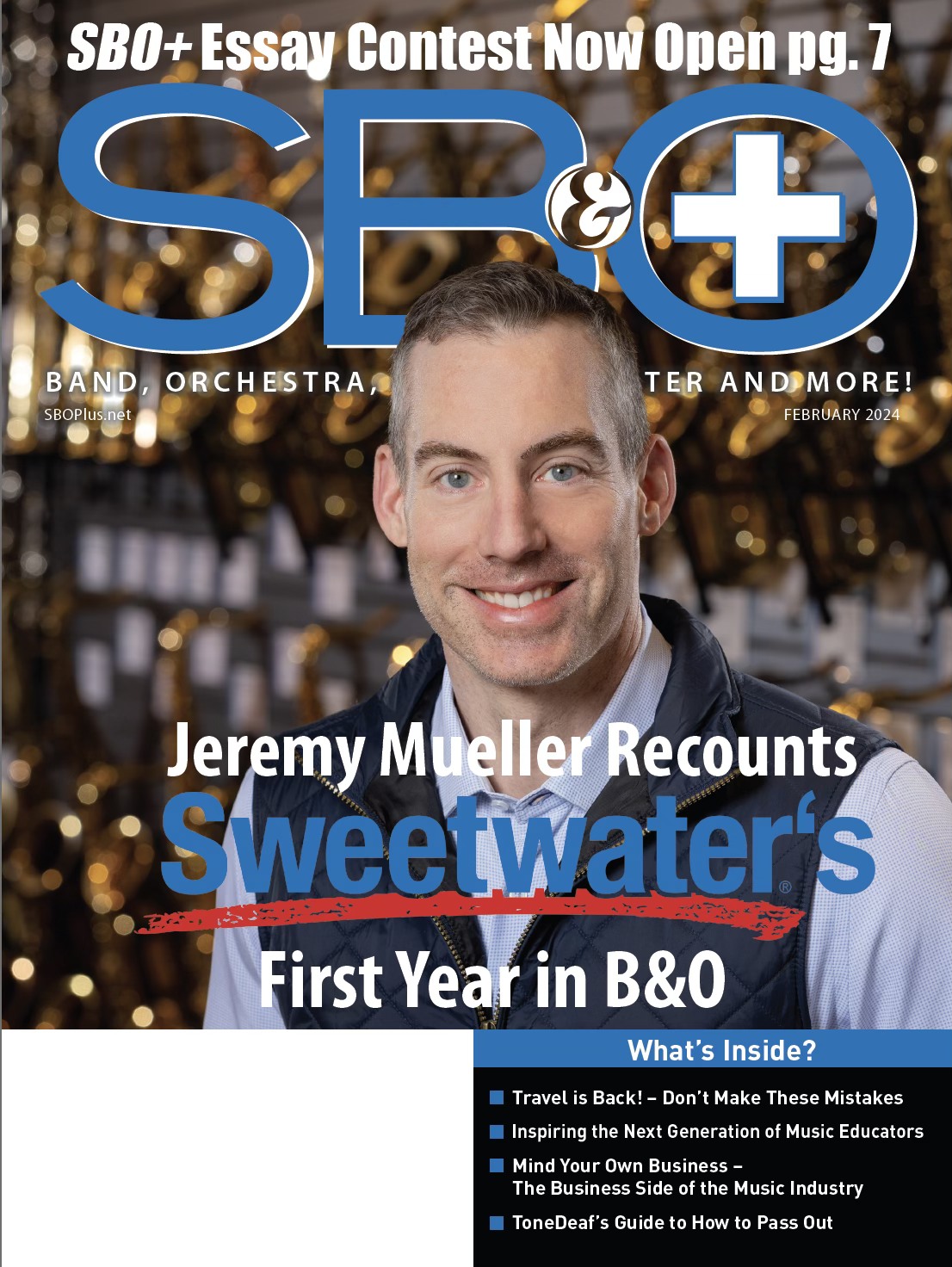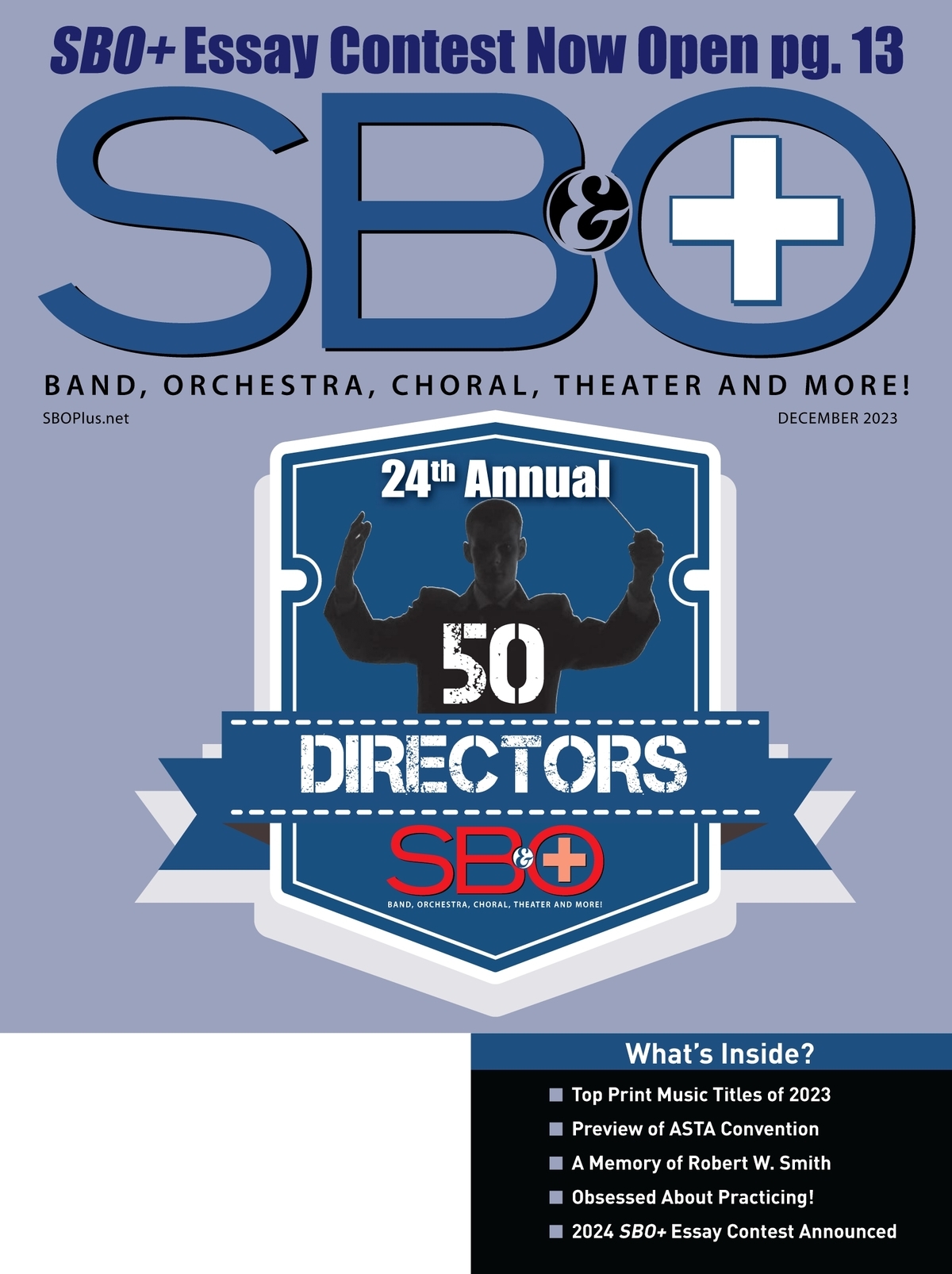EDUCATORS SUBSCRIBE FOR AS LOW AS $0.00! CLICK HERE!
A percussion ensemble is a great vehicle for developing not only technique and musicianship in young percussionists, but also interest and excitement about the world of percussion. When I first started teaching, I saw young students standing in the back of the band room tired of counting rests and playing music that was not as challenging or interesting as that of their fellow band members. Apparently not much had changed since I was in middle school.
The decision to start a percussion ensemble at Dickerson Middle School was made mostly for motivational reasons. I wanted to get the kids excited about playing percussion and challenge them with more involved parts than they were exposed to in the concert setting. A successful percussion ensemble at the middle school and high school levels is one that generates interest and helps the students develop their craft. Although an exceptional performance is great, the goal must be to have an educational environment as the driving force. Addressed in this article are a few of the topics that will be discussed during a clinic/performance I will be presenting at the Midwest Clinic in Chicago later this year.
Choosing Literature
Since my only percussion ensemble experience was in college, I had no idea what music would be appropriate for students at the middle school level. I browsed through several catalogues and picked out music with interesting titles. Once I received the scores, I found that most of it was either too easy, too difficult, or just not very good. The next step was to talk with other percussion ensemble directors, most notably Mike Lynch (Simpson Middle School/Lassiter High School) and Travis Downs (Valdosta Middle School), to find out what music they had used and liked. Probably the best advice I received during that time was from Alfred Watkins, band director at Lassiter High School. He told me to first teach the students how to learn by playing music that they could relate to and enjoy, then I would be able to teach them what I wanted them to learn. I started out playing more drum-oriented pieces because few of the students were interested in keyboard percussion and gradually began including music with a variety of instruments.
It has also been useful to collect demo CDs from various music publishers such as Row-Loff, Drop 6, and C-Alan and visiting their Web sites to listen to recordings. A final idea for finding quality literature is to attend as many percussion ensemble concerts as possible.
Find out when local middle school, high school, or even college ensembles will be presenting concerts and attend the local “Day of Percussion,” state music conventions, Midwest, and PASIC. Save the programs and make notes next to the titles. Also, try to choose music that will expose the students to a variety of cultures and styles. On a typical concert, we will perform an ethnic percussion piece featuring Japanese Taiko drums and/or African percussion, a xylophone rag, a marimba chorale, orchestral transcription, novelty percussion, Latin-American music, and traditional percussion ensemble literature. This provides an interesting variety for the students and audience and a great base of knowledge and skill.
Modifications
Due to the variety in instrumentation and the number of performers required to play a piece, it is often necessary to make some adjustments. In many cases, the instruments required to perform a piece simply aren’t available. We have played music for Taiko drums and djembe on concert toms, string bass on an electronic keyboard, and have two large floor toms that also function as surdos. The audience never knew the difference and the students still enjoyed learning the music and some background information on the cultures. One of the more common issues is the number of players required to perform a piece of music. In most situations there are more students than there are parts. Keyboard parts are easily doubled if there are enough instruments. It may be necessary to have students playing in the wrong octave so that two can play on one keyboard. This might change the sound of the music in performance, but is educationally important for the development of the students.
Latin and African music lends itself well to full ensemble playing with the large variety of accessory instruments and the community nature of the music and culture. I fit every student possible on a keyboard instrument, and then begin handing out cowbells, claves, maracas and shakers, tambourines, bongos, et cetera. We usually spend a two-to-three-week period during beginning percussion in sixth grade learning basic techniques and rhythms for Latin instruments, so later on it is merely a matter of reminding them. Even without this prior knowledge, it is not difficult or time consuming to introduce these instruments, techniques, and patterns to the students. Latin American Percussion by Birger Sulsbruck provides excellent information and is coordinated with a video by the same name.
Rehearsing
It is important that all of the students in the ensemble are able to read their music and count their parts out loud. If they cannot, it becomes a learning session for the entire group as we break down the rhythms or figure out the notes. Once the students are comfortable playing the notes and rhythms of their music, I begin to focus on the technique and quality of sound of the instruments, and the cohesiveness of the ensemble. Demonstrations of the correct technique or the desired sound are directed toward the entire ensemble so that it becomes a learning experience for all instead of the one student. Because the students are normally rotated to different instruments for each piece, the possibility that they will need to demonstrate that same skill later is likely.
We also do a lot of singing of the music in “drum speak” once the students understand how to count their rhythms. The natural inflections of the voice are more apparent with this method, helping the students to discover musical line and direction. At times it is necessary for me to dictate via call and response how I want the music to feel and sound. The students are exposed to these various “western” and “non-western” methods of learning through percussion videos that I play during their set-up time, and are fairly receptive to trying them. Recording rehearsals (audio and video) and bringing in guest clinicians and performers will also provide a different perspective and learning experience for both the students and the director.
Midwest
I hope to see and meet many of you at our session at The Midwest Clinic. The Dickerson Middle School Percussion Ensemble will serve as the demonstration group performing a variety of percussion ensemble literature and demonstrating some of the rehearsal techniques used with the program. In addition to the topics addressed in this article, we will discuss equipment issues, ensemble set-up, and beginning percussion. Attendees will receive a booklet covering the topics discussed, information on the ensemble at Dickerson, and a suggested literature list for middle and high school percussion ensembles.
Although I feel an obligation to pass along the information I have received through my experiences and the advice of other percussionists, the most important reason why I felt I had to apply to present a clinic at Midwest was to have the opportunity to bring my students to the convention. The students will have a chance to meet and interact with musicians and educators that will change their appreciation of our art. I certainly believe that those experiences alone will go a long way toward making this year’s percussion ensemble a success.






